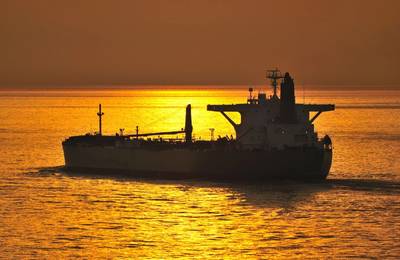Mideast-Asia Oil Shipping Rates Rebound, Capped by OPEC+ Supply Cuts
The cost of chartering a supertanker to load Middle Eastern crude oil for Asia has rebounded from a 19-month low in September, but industry sources expect output supply cuts, led by Saudi Arabia, to cap freight rates for the rest of the year.
The world's benchmark very large crude carrier (VLCC) export route from the Middle East Gulf (MEG) to Japan, known as TD3, rose to W50.46 on Monday in the Worldscale measure of freight rates, LSEG data showed. It fell to W35.60 in September, the lowest since Feb 2022.
Freight rates fell after Saudi Arabia started reducing its output by an additional 1 million barrels per day from July. Adding to the pressure, the leading OPEC member, together with major producer Russia, extended their combined 1.3 million bpd supply cuts to December.
"VLCC rates have improved as Saudi crude exports rebounded back to July level this month. Saudi is fulfilling term barrels nomination for October delivery and sending more crude to the West simultaneously," Anoop Singh, global head of shipping research at Oil Brokerage, said.
However, Singh said VLCC rates are unlikely to hit the highs of the fourth quarter last year, or levels suggested by tanker futures markets.
"We expect Saudi Arabia not to sustain this level of exports and U.S. crude exports to stall as production stops growing and U.S. refineries return from maintenance," said Singh.
China's buying appetite is likely to ease as it uses crude from its record-high inventories, he added.
The voluntary cuts by the Organization of the Petroleum Exporting Countries and allies, notably Russia (OPEC+), sent freight rates for trademark routes across main crude tankers classes to 2023-lows earlier, Ioannis Papadimitriou, senior freight analyst at Vortexa, said.
Changes in price spreads that began last week between West Texas Intermediate and Brent, and between Brent and Middle East crude Dubai, have also weakened the economics of shipping oil across regions, which could reduce the need for ships to travel longer distances.
"Given the narrow WTI-Brent spread that will potentially restrict further flows to Asia, this might lead to steady-to-higher Middle East volumes," Emril Jamil, senior analyst for crude and fuel oil at LSEG, said.
"In terms of (freight) rates, we may see a small step-up in Q4, but October might still be weak," said Jamil, adding that he expects weaker October crude volumes to China amid a decline in refining margins.
A source from an Asian shipowner company, speaking on condition of anonymity because they were not authorised to speak to the press, said crude supply was "much less", demand was not increasing and many ships were available, meaning rates were unlikely to rise sharply.
Beyond this year, however, some tanker operators expect broader demand growth.
"We see markets which can be sustained at least for a couple of years," Heidmar's CEO Pankaj Khanna told a Capital Link shipping conference in London earlier this month.
"(With) new trades such as Guyana coming up, where we see an increase in tonne miles on crude and on products. That adds again to the demand side," Khanna said.
(Reuters - Reporting by Jeslyn Lerh; Additional reporting by Jonathan Saul; Editing by Florence Tan and Barbara Lewis)












